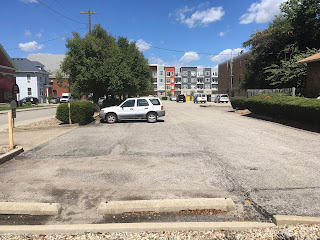Anyone?
Bueller?
Are you a candidate for city council but still have no idea what I'm talking about? You're not alone. Here's a brief explanation, and there's plenty more information out there.
Is Urban Infill a Sustainable Solution to Development?, by Matthew Pinsker (Daniel Silvernail Architect, Inc.)
Urban infill may be a viable solution for cities seeking to build tighter communities by utilizing space to its fullest potential. Conscious implementation of developments on underutilized land may be an effective sustainable agent that reduces daily vehicular travel time and the resulting environmental byproducts.
The National League of Cities’ Sustainable Cities Institute defines urban infill as “new development that is sited on vacant or undeveloped land within an existing community, and that is enclosed by other types of development.” Benefits include removing eyesores and safety concerns, supporting populations required to attract certain amenities (parks, community services, retail), and increasing the supply of affordable homes. Risks include improper management by local governments, demolishing historic buildings, and displacing residents of homes ...
















No comments:
Post a Comment